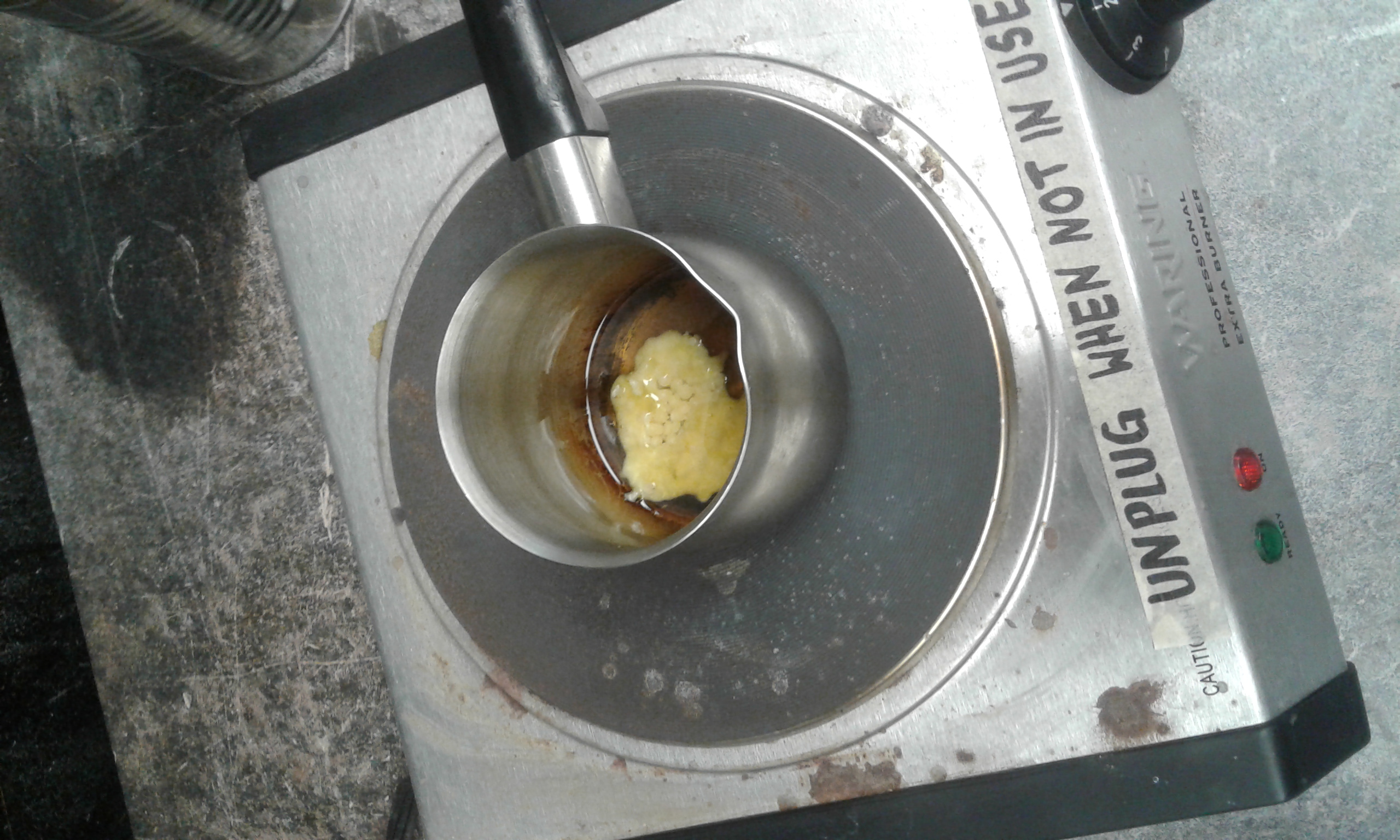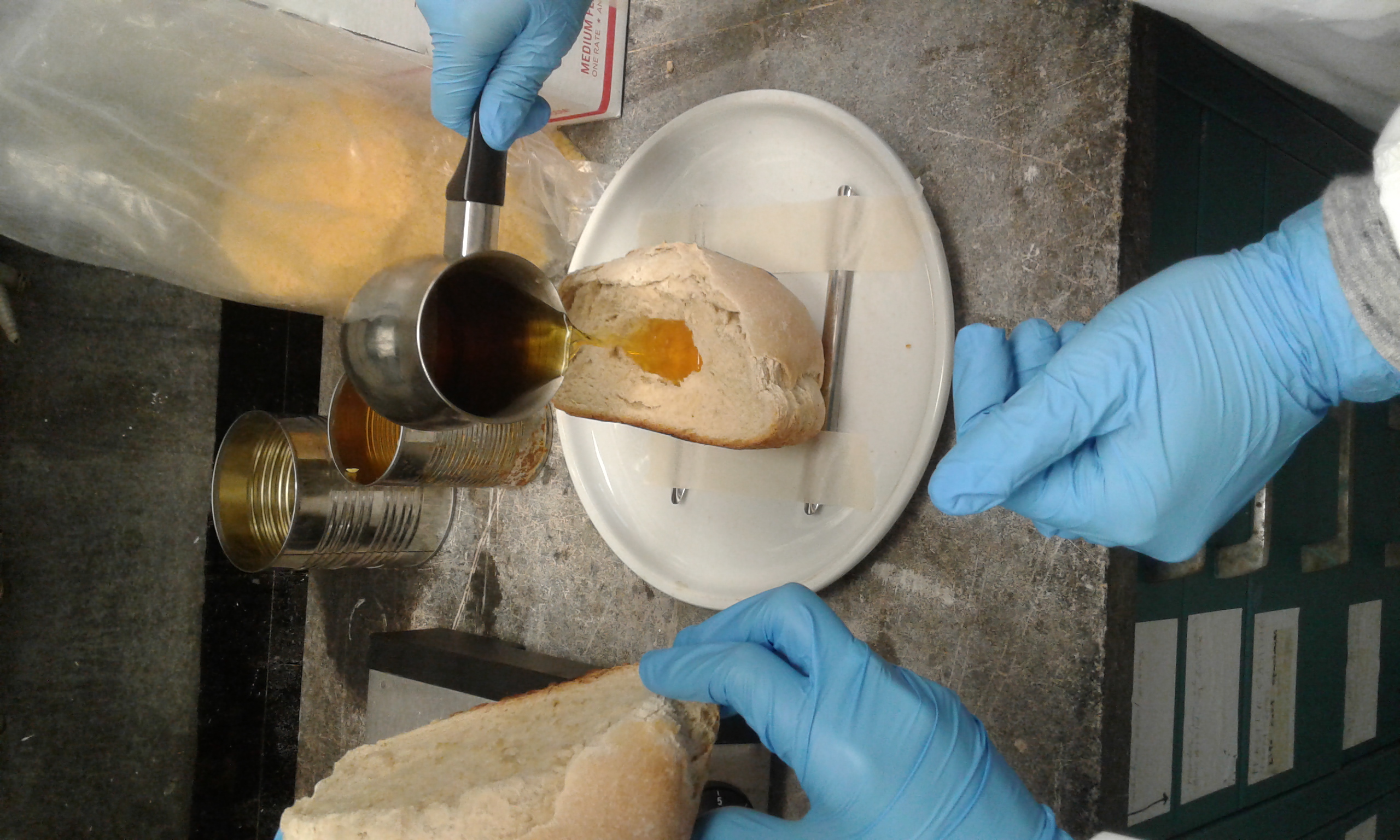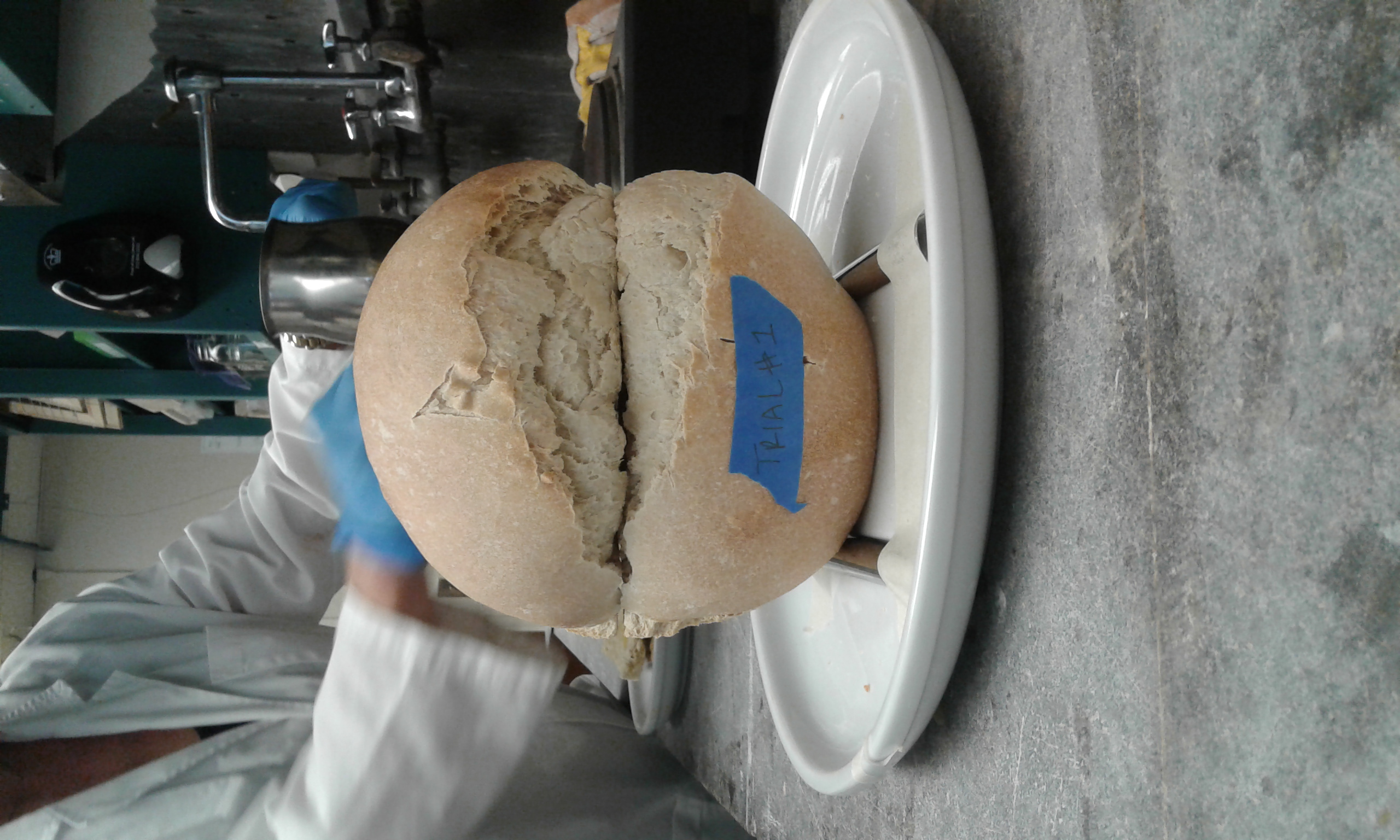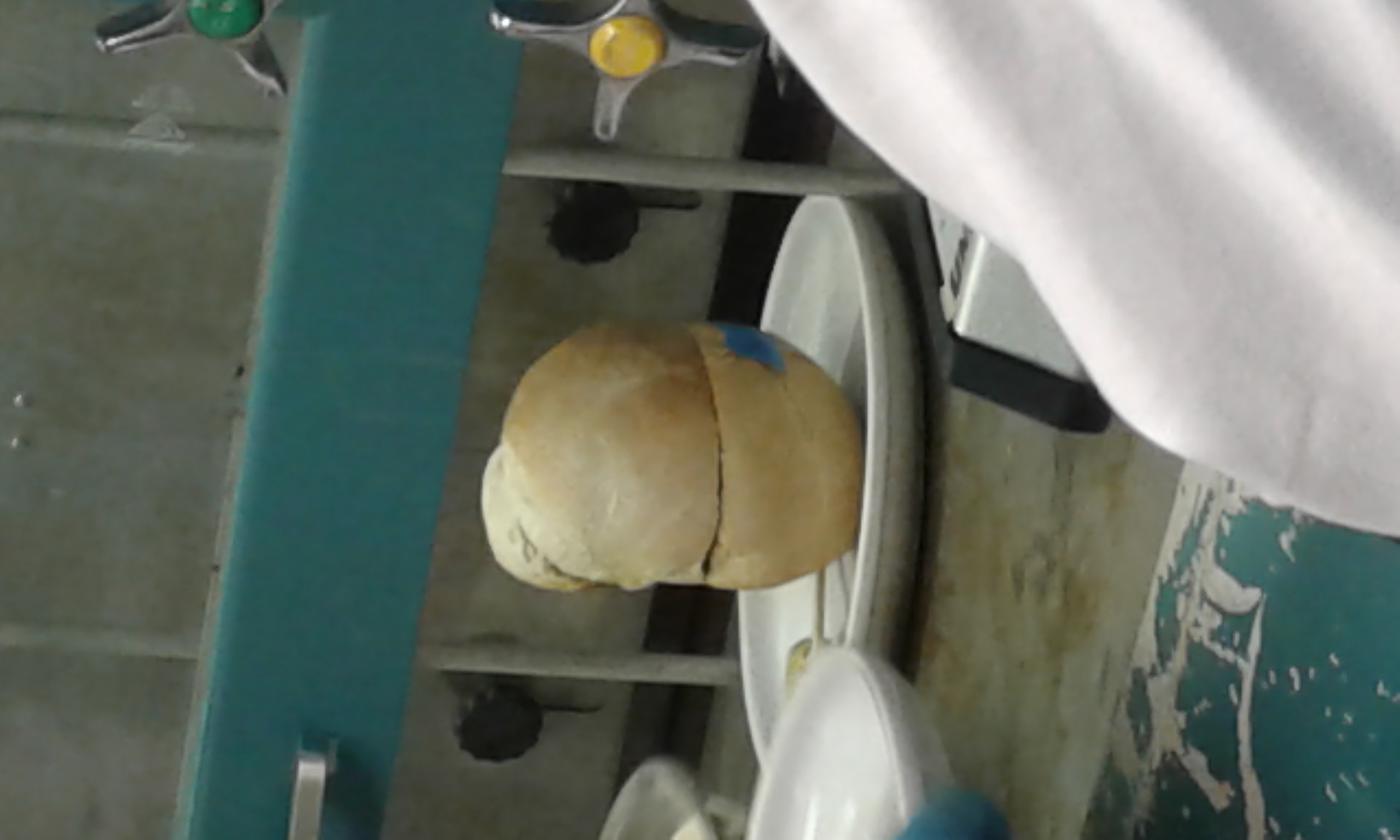Session #4 - Casting
Name: Ana Matisse Donefer-Hickie and Caitlyn Sellar
Date and Time: Sept. 23, 2016; ~12:30PM
Location: Making and Knowing Lab
Subject: Casting Wax and Sulphur into the Bread Molds
Conditions: Unrecorded
Method
Materials/Ingredients/Equipment
Wax
- beeswax pellets
- hot plate
- metal pot with handle
- plate
- tape
- powdered sulphur
- hot plate
- metal pot with handle
- ceramic plate
Procedure - Wax
We used the bread mold from our first molding trial.
We cut the end of the mold side of the loaf off so that it would stand upright on a ceramic plate with the help of metal supports and some tape.
Donna Bilak melted wax pellets for us in the metal pot over the hot plate.
Wax turns from milky and thick to golden liquid as it heats.

When wax was liquid, I poured it into the mold in our bread until it was flush with the top of the mold.

Caitlyn placed the second half of the loaf (without a mold indentation) on top of the mold half. We did this so that the exposed part of the mold wouldn't crystallize, which we then realized wouldn't be a problem anyway because only the sulphur/wax mixture has that problem and we were casting with wax and sulphur separately.

The wax was not set by 3:00PM, when I left. Mold was left in the lab and will be opened on Oct. 3rd, 2016 after class
Procedure - Sulphur
For the sulphur cast, we used the bread from our second molding trial.
Again we cut the end off of the mold side of the loaf so that it would stand on the plate. This time we did not need to secure it with metal supports and tape.
Like the wax, the sulphur was melted (by Joel Klein) on a hot plate (under the hood).
This time, Caitlyn determined when the sulphur was ready to pour. She had to pour quickly so that it didn't harden in the pot.
She poured the sulphur in the mold until it was flush with the top.
I placed the second half of the mold on the top and we left it to set under the hood. Again, mold will be opened on Oct. 3rd, 2016 after class.
I forgot to take any good pictures of this process.

Pictured: bread mold with sulphur left under the hood.
Personal Reflections
Baking/Molding: Working on this reconstruction, I found it very difficult to step back from my knowledge of breadmaking. Because I felt confident about making bread (I've done it a few times before but never with a sourdough starter) I found that when baking I fell into a familiar pattern instead of reading the historical recipe as closely as I should have. By the time we had finished, however, I had so many questions about the recipes that I can't help but feel that we couldn't have done the reconstruction justice in the time allotted, and needed trials to test every variable before the exercise could yield any concrete insight into the author-practitioner's experience. I found it extremely difficult to formulate a procedure for the entire experiment beforehand because the conditions under which we were working were so different from any "lab" type environments I've worked in before (in undergrad biology classes, for example). It was far less structured, less controlled, and there were so many more variables than any experiments I've ever done before. I think that this experience indicated to me that I will struggle with stepping back from what I already know about these materials and formulating workable procedures before experiments, as I am still uncomfortable with the form. I will seek to improve on these areas in future reconstructions.
Casting: With so much action and so many people in the lab, I found it very difficult to actually take notes and remember to take pictures while we were doing the experiment. I will have to come up with a system to make it easier for myself.